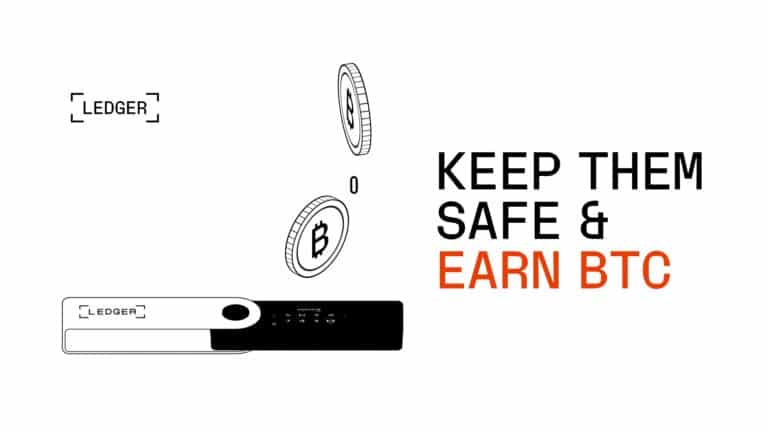WHAT IS BITCOIN ?
Invented in 2008 by Satoshi Nakamoto
Limited Supply of 21 Million Coins
Decentralized Digital Currency, Open Source peer to peer Money

Brief Insights
Bitcoin, introduced in 2009 by an enigmatic figure named Satoshi Nakamoto, stands as the pioneering decentralized digital currency. It operates through a peer-to-peer network, sidestepping centralized authorities. Utilizing blockchain technology, it secures and authenticates transactions.
The Bitcoin network is both public and open-source, enabling universal participation. It seamlessly integrates its network, cryptocurrency, and blockchain to maintain transparent transaction records, prevent duplicate expenditures, and establish consensus via a method known as “proof-of-work.”

What is Bitcoin ?
Bitcoin, introduced in 2009 by the enigmatic figure Satoshi Nakamoto, stands as the world’s inaugural and successful decentralized cryptocurrency and payment system. The term “cryptocurrency” encompasses a category of digital assets where transactions are safeguarded and validated through the practice of cryptography – a scientific method of encoding and decoding data. These transactions are frequently recorded on globally dispersed computers, utilizing a distributed ledger technology known as blockchain (as explained below).
Bitcoin can be subdivided into smaller units referred to as “satoshis,” divisible up to eight decimal places, serving both as a means of payment and a store of value akin to gold. The value of a single bitcoin has seen a significant surge since its inception, evolving from less than a cent to tens of thousands of dollars. In the realm of financial markets, bitcoin is denoted by the ticker symbol BTC.
The concept of “decentralization” frequently emerges in discussions about cryptocurrencies and essentially signifies a system that is widely dispersed and lacks a singular, centralized locus or controlling authority. In the case of bitcoin, as well as many other cryptocurrencies, the technology and infrastructure governing its creation, supply, and security operate independently of centralized entities such as banks and governments.
Instead, Bitcoin is engineered to enable users to exchange value directly within a peer-to-peer network. This network operates on a level playing field, where all participants possess equal influence, connecting directly to one another without the presence of a central server or intermediating entity. This arrangement facilitates the seamless transmission and reception of data or bitcoin payments between parties. The Bitcoin network, with a capital “B” when referring to the network and its technology and a lowercase “b” when alluding to the currency itself, bitcoin, is wholly public. This means that anyone around the world with an internet connection and a device capable of online connectivity can partake without any constraints. Furthermore, it is open-source, granting access for anyone to view or distribute the source code upon which Bitcoin was constructed.
A simple way to grasp the essence of bitcoin is to liken it to the internet, but for currency. Much like the internet, bitcoin exists in a purely digital realm, free from exclusive ownership or centralized control. It transcends borders, allowing anyone with electricity and a connected device to participate, operating non-stop. Just as individuals can seamlessly exchange data through the internet, bitcoin serves as a means for individuals to securely manage, issue, and transact with each other directly, without the need for intermediaries like banks. In essence, this is what defines bitcoin.

A Fiat Currency Alternative
Bitcoin was originally conceived by Nakamoto as a substitute for conventional currency, with the aim of eventually establishing its status as a globally recognized legal tender for purchasing goods and services.
Nonetheless, the practicality of using bitcoin for payments has encountered some hindrances due to its price volatility. Volatility, in this context, refers to the extent of price fluctuations experienced by an asset over a given period. In the case of bitcoin, its value can undergo substantial daily, and even minute-to-minute, shifts, rendering it a less than ideal choice for transactions. For instance, one wouldn’t desire to pay $3.00 for a cup of coffee, only to find its value rise to $3.30 in a matter of minutes. Conversely, it doesn’t favor merchants when bitcoin’s price experiences a significant decline shortly after a purchase is made. In many aspects, bitcoin operates in a manner opposite to traditional money: it lacks central bank control, possesses a fixed supply (preventing arbitrary creation of new bitcoins), and exhibits unpredictable pricing. Understanding these distinctions is fundamental to comprehending bitcoin.
How Bitcoin Operates
To comprehend the functioning of Bitcoin, it’s crucial to recognize that it comprises three distinct elements, all harmonizing to establish a decentralized payment system:
- The Bitcoin Network
- The Native Cryptocurrency (Bitcoin or BTC)
- The Bitcoin Blockchain
Bitcoin operates via a peer-to-peer network where users, often individuals or entities seeking to exchange bitcoin, can perform and validate transactions without the need for intermediaries. Users can directly connect their computers to this network and access the public ledger containing the complete historical record of bitcoin transactions.
This public ledger relies on blockchain technology, also referred to as distributed ledger technology, which underpins the verification, storage, and orderly arrangement of cryptocurrency transactions in an immutable and transparent manner. Immunity to alteration and transparency are fundamental attributes for a trustless payment system.
As new transactions receive confirmation and are appended to the ledger, the network automatically updates each user’s ledger copy to reflect the latest changes, akin to an open Google document updated by anyone with access.
The Bitcoin blockchain, as the name implies, consists of a digital sequence of chronologically ordered “blocks” comprising bitcoin transaction data. It’s important to note that transaction validation and bitcoin mining are distinct processes; mining can occur independently of transaction addition to the blockchain. The Bitcoin system is designed to incorporate new blocks into the blockchain roughly every 10 minutes, regardless of the volume of pending transactions.
Due to the blockchain’s public nature, all network participants can monitor and evaluate bitcoin transactions in real-time. This architecture mitigates the risk of double-spending, an issue prevalent in online payments, where a user attempts to spend the same cryptocurrency twice.
In traditional banking, a central authority prevents double-spending through reconciliation, while physical cash can’t be duplicated because it involves the transfer of tangible currency.
However, Bitcoin functions differently, as it has numerous copies of the same ledger. Therefore, it necessitates unanimous consensus among all network users to validate each bitcoin transaction. This consensus mechanism is achieved through a process known as “proof-of-work,” ensuring the integrity and security of the Bitcoin network.

What is Proof of Work? (Bitcoin Mining)
Proof-of-work (PoW) is a computational process utilized by computers within the Bitcoin network to validate transactions and ensure the security of the network. It serves as the consensus mechanism for the Bitcoin blockchain.
While Proof-of-Work was the pioneering and most widely adopted consensus mechanism among cryptocurrencies operating on blockchains, there are alternative mechanisms, notably proof-of-stake (PoS), which typically consumes less computational power and, consequently, less energy.
Proof-of-work designates specific network participants as “validators,” commonly known as “miners.” These validators earn this role by demonstrating their commitment to the network through the dedication of significant computational resources to the task of discovering new blocks. This discovery process typically takes about 10 minutes. Once a new block is found, the successful miner responsible for this discovery has the privilege of populating it with a megabyte’s worth of verified transactions. This new block is subsequently appended to the blockchain, and the ledger copies held by all network participants are updated to reflect the latest data. In return for their efforts, miners are entitled to retain any transaction fees associated with the transactions they include, in addition to receiving a portion of newly created bitcoins. The newly minted bitcoins awarded to successful miners are known as “block rewards.”
Every Bitcoin user is required to pay a network fee when sending a transaction, which is typically based on the transaction’s size. This fee is essential to ensure that the transaction is queued for validation, similar to purchasing a postage stamp when sending a letter.
Why Bullish on Bitcoin?
- 1. Limited Supply: Bitcoin has a capped supply of 21 million coins, which can make it a hedge against inflation. This scarcity can potentially increase its value over time.
- 2. Security: Bitcoin transactions are secured using strong cryptographic techniques, making it highly secure and challenging to counterfeit. The underlying blockchain technology also ensures transparency and immutability of transaction history.
- 3. Decentralization: Bitcoin operates on a decentralized network of computers, which means it's not controlled by any single entity or government. This decentralization can make it resistant to censorship and interference.
- 4. Global Accessibility: Bitcoin is accessible to anyone with an internet connection, providing financial inclusion for individuals who are unbanked or underbanked, especially in regions with limited access to traditional financial services.
-
5. Innovation and Investment: Bitcoin has driven significant innovation in the financial and technological sectors, leading to the development of numerous cryptocurrencies and blockchain applications.
6. Inflation of Fiat Currency
7. Incoming ETF Bitcoin (Blackrock and many more)
8. Bitcoin Halving Start(+- 04/2024)


How to Protect Your Crypto Assets
Cryptocurrencies like Bitcoin and Ethereum are essentially digital code residing on the blockchain. Since they lack physical form and are entirely digital, securing them requires a level of technical expertise. It’s essential to understand both where you opt to store your digital assets and the potential vulnerabilities they may face from hacking.
Utilizing default wallets provided by cryptocurrency exchanges carries significant risks.
Many newcomers purchase digital currencies through exchanges such as Coinbase or Kucoin and keep their assets in the exchanges’ “custodial” wallets. However, like any online platform, exchanges are susceptible to cyberattacks. Given their central role in handling massive daily transaction volumes, they become particularly enticing targets for malicious actors.
The cautionary stories of past incidents, such as the 2014 Mt. Gox incident, where 750,000 customer bitcoins were “lost”; the $60 million robbery of NiceHash in December 2017; and a near miss at Binance in 2018, underscore the perils associated with entrusting your assets to an exchange’s online wallet.
Comparing Cold Storage to Hot Wallets
Conventional wisdom dictates that if you have a significant amount of virtual currency, more than you’d be comfortable carrying in person, or if your intention is long-term investment, it’s advisable to opt for “cold storage.” This can entail using an offline computer or a specialized USB device known as a hardware wallet.
Nevertheless, not everyone has the means to dedicate a computer solely to cryptocurrency storage or invest in hardware wallets like Trezor and Ledger, which typically cost between $70 and $220. These hardware wallets, intentionally, introduce added complexity and additional steps to each transaction. In contrast, software wallets are usually free and easily accessible, but they tend to offer a lower level of long-term security.
Three Types of Software Wallets (Not Secure)
The primary purpose of a cryptocurrency wallet is to manage the essential public and private keys required for blockchain transactions. Furthermore, many wallets offer additional features such as integrated currency exchange. Software wallets can be categorized into three main types: desktop, online, and mobile, with some overlap between these categories due to cross-device functionality. Each of these wallet types provides a distinct blend of convenience and security.
-
Mobile Wallets: Mobile wallets are primarily designed for everyday retail transactions, allowing users to make purchases with cryptocurrencies like Bitcoin. These wallets store encryption keys on the user’s mobile device, which means that losing the device can result in the loss of one’s cryptocurrency holdings. However, in case of loss or theft, some mobile crypto wallets offer the possibility to recover the wallet on a different device, contingent upon the specific type of mobile wallet used. It’s important to safeguard your private keys to prevent the potential loss of valuable cryptocurrency assets.
-
Desktop Wallets: Desktop wallets are software applications that you install on your computer, offering a high level of control over your digital assets. However, when connected to the internet, desktop wallets are exposed to potential vulnerabilities, such as malware attacks, remote intrusions into your computer, or even hard drive failures even when offline. Therefore, it is crucial to diligently manage and secure your private keys by storing them in a safe location to prevent any potential catastrophes.
-
Online Wallets: Online wallets are hosted on servers, typically managed by cryptocurrency exchanges. These wallets are known for their accessibility from any internet-connected device, providing convenience to users. Nevertheless, there is a significant downside: the website owner usually has knowledge of your private keys. This type of wallet is known as a custodial wallet, where a third party retains access to your private keys on your behalf. Consequently, you place your trust in the company managing your wallet keys, as from a technical standpoint, there may be limited barriers preventing them from seizing your cryptocurrency assets. Careful consideration of this trust dynamic is vital when using online wallets.




